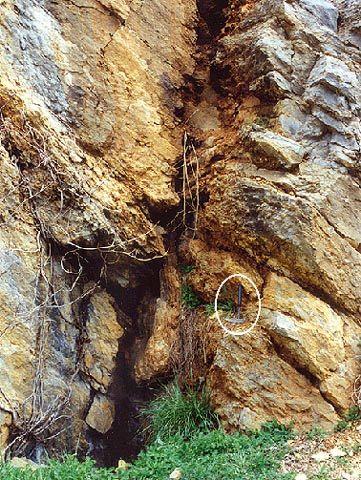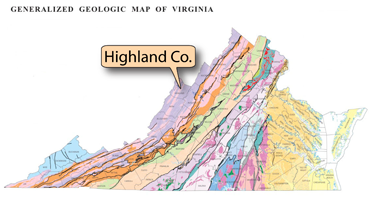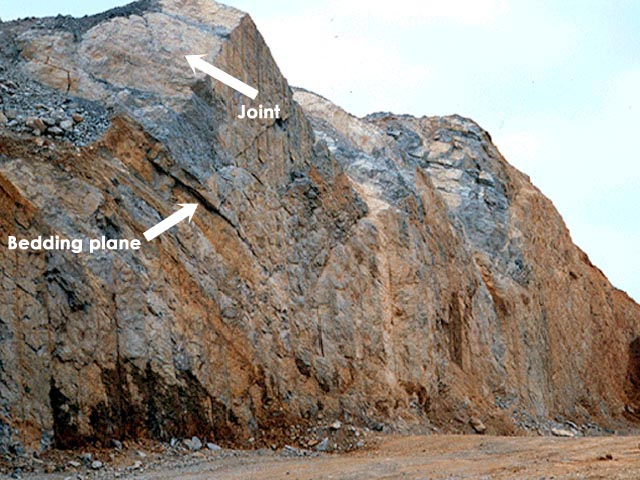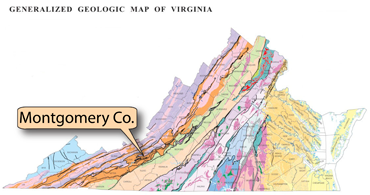
Geologic Structures (Part 1)
Geologic structures are divided into two basic groups, brittle structures and ductile structures. Rocks deformed by fracturing or breaking have brittle structures. Brittle structures include joints and faults. Rocks deformed by bending, shortening, or stretching have ductile structures. Ductile structures include anticlines, synclines, domes, and basins.
1. Joints
2. Faults
Joints
• Joints are fractures (cracks) in rocks along which no movement has occurred.
• Joints develop perpendicular to the direction of tensional stress. They develop at angles to the direction of compressional stress.
• Joints are important because they create open spaces in rock in which water, oil, or natural gas can move or be stored.
• Joints also provide potential surfaces along which rocks can slide.

Joints (Photograph by Stan Johnson
 Joints allow groundwater and other liquids to move through rocks. In this limestone in Highland County, groundwater has moved through a joint and dissolved away some of the limestone. Note the rock hammer for scale (oval).
Joints allow groundwater and other liquids to move through rocks. In this limestone in Highland County, groundwater has moved through a joint and dissolved away some of the limestone. Note the rock hammer for scale (oval).
 Joints at a roadcut (Photograph by Robert Whisonant)
Joints at a roadcut (Photograph by Robert Whisonant)
 This photograph shows jointed rocks along a road cut in Montgomery County. Arrow shows the smooth joint surface along which rocks could slide.
This photograph shows jointed rocks along a road cut in Montgomery County. Arrow shows the smooth joint surface along which rocks could slide.